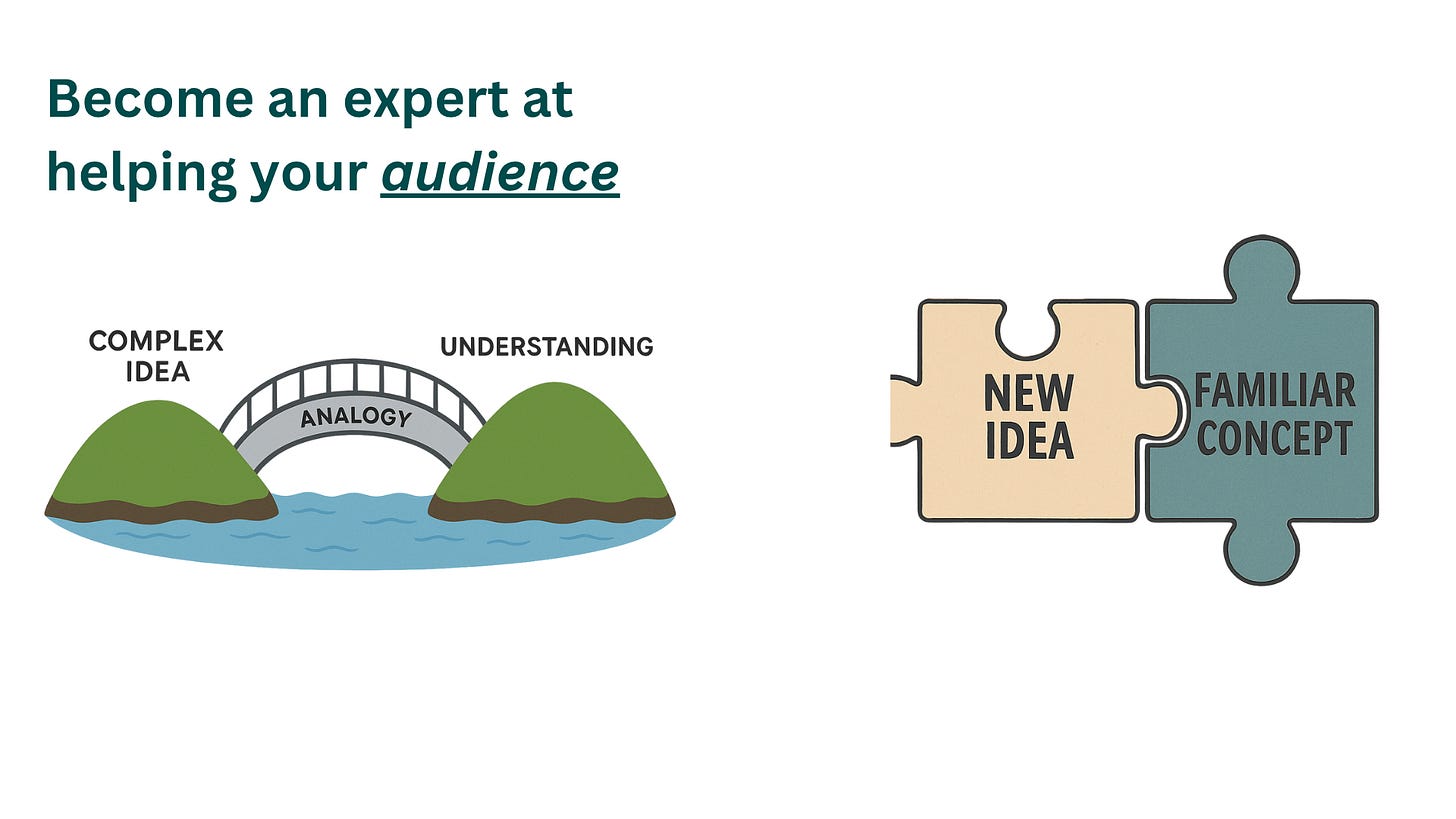Analogies Aren’t Decoration—They’re the Bridge
How to make complex ideas click by connecting them to what your audience already knows
Explaining complex ideas is easy—if your audience already thinks like you do. But most of the time, they don’t. Especially when you’re a domain expert talking to people outside your field.
That’s where most of us get stuck.
We assume others have the same mental map. So we explain everything we know. We add more detail, more context, more background. We continue to talk, hoping clarity will eventually emerge. But it doesn’t.
This is the curse of knowledge. When you know something deeply, it’s hard to imagine not knowing it. You forget what it was like to be a beginner.
I’ve been there. In my early years as a software engineer, I overwhelmed every audience I spoke to—whether it was my manager, a cross-functional partner, or a customer. I thought clarity came from depth. It doesn’t. It comes from relevance.
One of the most powerful ways to break the curse of knowledge is to use analogies.
Think of an analogy as a bridge.
You’re on the island of complexity.
Your audience is on the island of understanding.
The analogy connects the two.
A good analogy doesn’t just simplify; it makes the concept intuitive. You start with something your audience already knows, and use that to introduce what they don’t. You’re not dropping them into unfamiliar territory. You’re extending what’s already familiar.
Let me share three examples that show this in action.
Larry Ellison at Oracle
In a keynote about Oracle’s healthcare platform, he didn’t start by describing the product. Instead, he talked about credit cards.
He explained how, decades ago, credit companies didn’t share data. That made it hard to build a consistent credit score. It was chaos.
Then he connected that idea to healthcare: hospitals don’t share patient data either. That makes it hard to coordinate care. But what if someone aggregated that information, just like credit bureaus do?
In five minutes, he managed to make the audience care. Then, and only then, did he talk about Oracle’s product.
Andrew Ng on AI
At a Snowflake conference, Andrew opened with a single analogy: “AI is the new electricity.”
That line unlocked everything else. Electricity changed every industry, so will AI. Everyone in the room, regardless of their background, could immediately see the relevance. They didn’t need to be data scientists. They just needed to understand the pattern.
My Mom and Graph Search
My mother is 76. She lives in India. She loves WhatsApp.
She has no idea what graph search is. But she knows how to plan a birthday party.
I told her: if you call one sibling, then all their kids, move on to the next sibling, that’s depth-first search. If you call all your siblings first, and then their kids, that’s breadth-first search.
She got it. No talk of recursion. No jargon. Just a concept rooted in her daily life.
That’s the power of analogy.
Before your next presentation or conversation, try this:
Don’t ask, “What do I want to explain?”
Ask, “What does my audience already know and how can I build on it?”
That’s how you stop building clocks and start telling the time.
That’s how your ideas begin to land.


